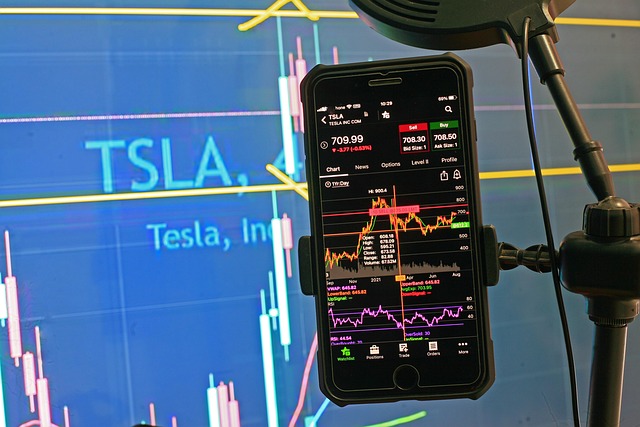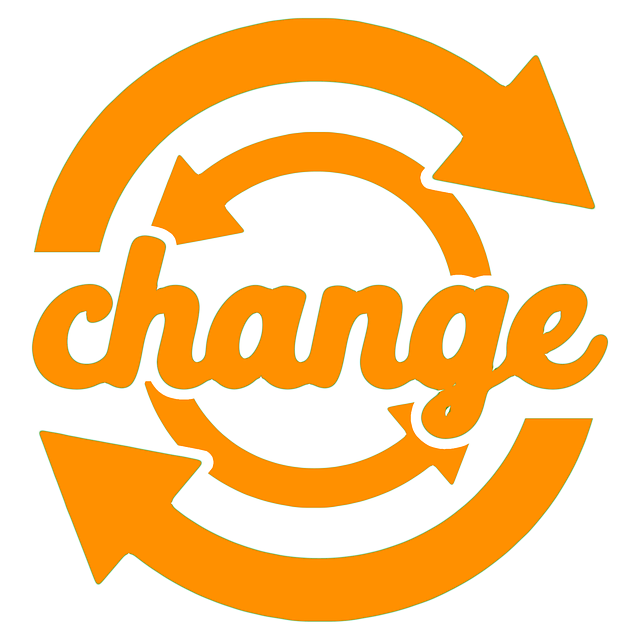Is Trading Futures Harder Than Options in 2025?
Author: Jameson Richman Expert
Published On: 2025-09-02
Prepared by Jameson Richman and our team of experts with over a decade of experience in cryptocurrency and digital asset analysis. Learn more about us.
Embarking on my journey into the complex realm of financial trading, I initially perceived futures and options as two sides of the same coin—both derivatives, both tradable on major exchanges, and often discussed together. However, as I progressed, I realized that beneath their surface similarities lie profound differences in structure, risk, and strategic execution. Fast forward to 2025, a year marked by rapid technological evolution, geopolitical upheavals, and increasingly sophisticated regulatory landscapes, understanding these distinctions is more crucial than ever. Many novice traders and even seasoned investors grapple with the question: "Is trading futures harder than options?" The answer is nuanced. It depends heavily on your familiarity with their mechanics, your risk appetite, and your strategic discipline. Drawing from my personal experience—learning through trial and error, continuous education, and adapting to market shifts—I find futures trading generally more demanding due to its leverage-driven dynamics and the need for precise timing. This comprehensive analysis aims to dissect the fundamental differences, the unique challenges each presents, and actionable insights to help you determine which instrument aligns best with your trading goals in 2025.

Understanding Futures and Options: The Fundamentals
Before evaluating their difficulty levels, it’s essential to grasp what futures and options are at their core. Futures are standardized contracts that obligate the buyer to purchase and the seller to deliver an underlying asset—be it commodities, stocks, or indices—at a predetermined price on a specified future date. These contracts are traded on regulated exchanges like CME, ICE, or others, and are marked to market daily. This means gains and losses are settled at the end of each trading session, ensuring continuous reflection of market prices. Futures are predominantly used for hedging against price fluctuations or for speculative bets, often employing significant leverage. The leverage amplifies returns, but equally magnifies losses, making risk controls vital.
In contrast, options provide the buyer with the right—but not the obligation—to buy (call options) or sell (put options) an underlying asset at a specified strike price before or on the expiration date. This asymmetry means the maximum loss for the buyer is limited to the premium paid, while the seller (or writer) faces theoretically unlimited risk in certain strategies. The complexity of options stems from multiple interacting factors—most notably the Greeks: delta (price sensitivity), gamma (rate of change of delta), theta (time decay), and vega (volatility sensitivity). These elements influence pricing and risk management, requiring traders to develop a nuanced understanding of how external variables impact their positions. Both are derivatives, but their structural differences dictate contrasting risk profiles and strategic approaches.
The Intricacies of Trading Futures in 2025
Trading futures in 2025 involves navigating an environment transformed by technological breakthroughs: algorithmic trading, high-frequency trading (HFT), AI-powered analytics, and machine learning models now dominate the landscape. The speed and volume of trades have skyrocketed, demanding that traders not only master fundamental and technical analysis but also interpret real-time data streams with precision. Macro-economic indicators—such as inflation rates, employment figures, and central bank policies—are now complemented by geopolitical tensions, trade disputes, and technological disruptions, all capable of triggering rapid, unpredictable market swings.
The leverage characteristic of futures is a double-edged sword. While it allows traders to control large positions with relatively small capital outlays, it also exposes them to swift margin calls during volatile swings. For instance, a minor adverse move in a commodity or equity index can lead to a cascade of margin requirements, forcing liquidation of positions and magnifying losses. My early trading experiences underscored this reality—an understated geopolitical event resulted in sudden market reversals, leading to substantial margin calls and capital erosion. To manage such risks, traders must employ sophisticated tools: dynamic stop-loss orders, adaptive margin strategies, and prudent position sizing. The high-speed nature of futures markets in 2025 necessitates disciplined risk management and continuous monitoring.
Furthermore, the diversity of futures contracts—covering commodities like oil and gold, cryptocurrencies, equity indices, interest rates, and even weather derivatives—requires traders to develop specialized knowledge. For example, trading Bitcoin futures entails understanding crypto-specific volatility, regulatory considerations, and market sentiment shifts, while agricultural futures demand familiarity with seasonal patterns and geopolitical influences on supply chains. Recent reports indicate increased participation from institutional investors, which enhances liquidity but also introduces greater market sensitivity and complexity. For in-depth insights on high-frequency futures trading costs and strategies in 2025, refer to this article on Binance’s trading fees.
The Complexity of Trading Options in 2025
While options are often viewed as less risky due to their limited downside (the premium paid), the trading landscape in 2025 reveals an increased level of strategic complexity. Traders frequently employ multi-legged strategies such as spreads, straddles, strangles, butterflies, and condors—each tailored to specific market conditions, volatility expectations, or directional biases. Mastery of the Greeks is essential here; not just for initial positioning but also for dynamic management as expiration approaches. The Greeks—delta, gamma, theta, and vega—interact continuously, influencing pricing, risk, and potential profit zones.
Implied volatility (IV) has taken center stage in options trading, especially in 2025's turbulent geopolitical and economic environment. Volatility spikes—whether from political conflicts, economic sanctions, or technological upheavals—can cause premiums to inflate rapidly, creating both opportunities and risks. For example, a sudden surge in IV can increase premiums, allowing traders to profit from volatility spreads, but also erode premiums if volatility subsides unexpectedly. I invested considerable time learning how to hedge against such volatility swings through strategies like calendar spreads or adjusting multi-leg positions—skills that are crucial during periods of heightened uncertainty.
The proliferation of structured products and volatility ETFs further complicates the options landscape in 2025. Understanding how external shocks—such as geopolitical developments or macroeconomic reports—impact implied volatility and option premiums is vital. For a comprehensive analysis of high-frequency trading’s influence on options markets this year, see this market dynamics report.

Risk and Reward: Comparing the Two Instruments in 2025
The primary reason futures are considered more challenging is their leverage structure. With leverage, even minor adverse market movements can trigger margin calls, forced liquidation, and substantial capital loss—sometimes exceeding initial capital if risk controls are lax. To mitigate this, disciplined risk management tools such as tight stop-loss orders, position limits, and ongoing margin monitoring are indispensable. The high volatility environment of 2025 amplifies these challenges, making futures suitable primarily for experienced traders who can actively manage positions and respond swiftly to market signals.
Options, by contrast, inherently limit downside risk to the premium paid, providing a built-in safety net. However, their strategic complexity—understanding the Greeks, managing time decay, and adjusting positions as expiration nears—requires significant expertise. The increased market turbulence in 2025, driven by geopolitical tensions and economic shifts, presents both opportunities and risks for options traders. Profiting from volatility spikes or employing hedging strategies necessitates advanced risk management skills and a deep understanding of macroeconomic factors influencing implied volatility.
Ultimately, the decision between futures and options hinges on individual risk tolerance, trading style, and strategic goals. Futures attract traders with a high risk appetite and an active management approach, while options appeal to those seeking strategic flexibility, limited downside, and hedging capabilities.
The Influence of Market Volatility and Trader Experience
Market volatility remains a central factor influencing trading in 2025. During turbulent periods—be it geopolitical conflicts, inflation spikes, or technological disruptions—futures markets can experience swift, unpredictable swings, demanding decisive action. The velocity of price movements can cause rapid margin depletion, especially when trading leveraged contracts. Traders lacking discipline or risk controls risk severe losses within seconds.
Options, though offering a cushion via limited losses, are not immune to volatility impacts. Spikes can inflate premiums, creating arbitrage opportunities, but also increase the risk of premium erosion if volatility suddenly drops. My personal experience underscores the importance of continuous education—keeping abreast of geopolitical developments, economic indicators, and market sentiment—and practicing disciplined trading. Utilizing demo accounts and trading small positions during volatile events helps develop intuition and resilience. Platforms like Binance and MEXC offer excellent resources, including simulation tools and advanced analytics, to hone your skills safely.
Practical Tips for Mastering Futures and Options in 2025
- Construct a comprehensive trading plan that emphasizes risk management, clear entry and exit rules, and appropriate position sizing tailored to each instrument’s characteristics.
- Leverage simulated trading environments to test strategies under different volatility regimes—especially during major economic reports or geopolitical events.
- Enhance technical analysis skills: study advanced chart patterns, volume analysis, and indicator signals to improve market predictions.
- Develop a deep understanding of the Greeks and volatility dynamics for options, incorporating macroeconomic data to anticipate moves.
- Maintain strict discipline—avoid impulsive trades driven by emotions, particularly with futures’ high leverage where losses can escalate rapidly.
- Engage with reputable educational platforms and communities, many of which now leverage AI algorithms and real-time analytics to inform your trading decisions.
Platforms such as Bitget and Bybit excel at providing user-friendly interfaces, educational content, and sophisticated analytical tools that serve both novice and experienced traders alike.

Conclusion: Which Is More Challenging in 2025?
From my perspective, the difficulty of trading futures versus options in 2025 depends largely on your individual trading personality, risk management discipline, and depth of market understanding. Futures are inherently more challenging due to their high leverage, exposure to rapid price swings, and the necessity for swift, precise decision-making. They are best suited for traders who can actively monitor markets, implement rigorous risk controls, and tolerate high-stakes environments.
Options, while more complex in their strategies—especially multi-leg setups—and influenced heavily by volatility and time decay, inherently limit downside risk. Their strategic flexibility makes them appealing for traders who seek controlled risk exposure and hedging capabilities. Mastering options in 2025 requires a solid grasp of Greeks, volatility, and macroeconomic influences, but rewards those who can effectively manage their positions against unpredictable market shocks.
Success in either domain demands continuous learning, disciplined practice, and adaptability to an ever-evolving marketplace. Technological advances, increased market participation, and geopolitical uncertainties make ongoing education essential. Staying informed through credible sources, practicing with demo accounts, and developing a resilient trading plan are vital strategies for thriving in 2025’s complex derivatives landscape. For further insights into the evolving nature of derivatives trading, explore this comprehensive analysis of Binance margin trading trends in 2025.
Ultimately, your proficiency in navigating futures and options hinges on patience, discipline, continuous learning, and strategic adaptability. Recognizing their nuanced differences allows you to craft more effective trading approaches. Keep honing your skills, leverage quality educational resources, and approach every trade with caution and confidence—your mastery in 2025 will define your success in the dynamic world of derivatives trading.